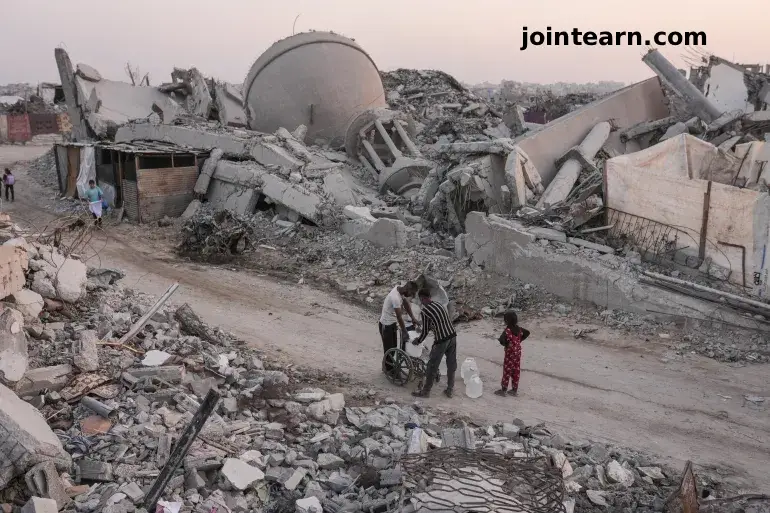
At least two Palestinians, including a child, were killed in an Israeli drone strike east of Khan Younis in southern Gaza, Al Jazeera reporters confirmed. The incident comes amid increasing ceasefire violations since a truce was implemented last month, raising concerns about escalating tensions in the region.
Hamas Condemns Israel’s “Daily and Continuous Violations”
Hamas denounced Israel’s actions, accusing it of maintaining a persistent campaign of airstrikes and demolitions across Gaza. In a statement on Telegram, the group said that since the ceasefire began on October 10, 2025, Israeli attacks have killed 271 Palestinians, over 90% of them civilians, and injured 622 others.
The Israeli military, however, defended the strike, claiming those targeted posed “an immediate threat” to its forces.
Destruction Intensifies in Khan Younis and Central Gaza
Israeli forces have reportedly continued demolishing homes inside the so-called “yellow line,” a temporary boundary set under the ceasefire agreement. Al Jazeera correspondents on the ground have documented escalating destruction in eastern Khan Younis, with multi-storey residential buildings targeted.
Hamdan Radwan, mayor of Bani Suheila, the largest municipality in the area, said:
“Every two-storey building or house is being targeted.”
Satellite imagery and field footage confirm that large sections of central Gaza neighborhoods have been reduced to rubble, leaving countless Palestinians homeless and vulnerable.
Aid Deliveries Severely Restricted
Despite ceasefire terms requiring humanitarian access, Israel continues to limit aid deliveries to Gaza, exacerbating a severe humanitarian crisis. Hamas reports that Israel has restricted at least 600 aid trucks daily, including 50 carrying fuel, far below the agreed quota.
On Sunday, only 270 trucks entered Gaza through the Karem Abu Salem (Kerem Shalom) and al-Karara (Kissufuim) crossings, including:
- 126 trucks of humanitarian aid
- 127 trucks of commercial goods
- 10 trucks of fuel
- 7 trucks of cooking gas
UNRWA officials say 500–600 trucks of supplies are required daily to meet Gaza’s most basic needs, but Israel’s restrictions have led to significant shortages of food, medicine, clean water, and essential goods.
UN and Local Reports Highlight Severe Shortages
John Whyte, UNRWA’s senior deputy director for Gaza operations, told The Journal:
“They just won’t let anything that’s owned by UNRWA go in. They’re requiring us to hand our supplies to other agencies and remove the UNRWA logo before they can cross. It’s creating enormous logistical delays.”
Displaced families, particularly in northern Gaza, continue to face dire conditions. Al Jazeera reporters noted that many residents have gone without direct humanitarian aid for 75 days, with long queues for water and minimal access to basic foods.
Body Exchange Continues Under Ceasefire
As part of the truce’s body exchange agreement, Israel handed over 15 Palestinian remains to Gaza authorities on Monday. This marks the 12th such exchange under the ceasefire, with 315 bodies returned so far. Only 89 have been identified, largely due to decomposition and insufficient equipment.
Hamas confirmed that it has complied with its obligations, releasing 20 living captives within 72 hours despite challenging conditions, and retrieving 24 of 28 bodies.
Medical and Humanitarian Relief Efforts Resume
The World Health Organization (WHO) announced that al-Kheir Hospital in Khan Younis has resumed operations following months of closure due to Israeli attacks. WHO provided support to restore power, sanitation, water systems, and medical equipment.
Additionally, a new 20-bed nutrition stabilization center opened at the hospital, bringing the total to eight centers across Gaza. These facilities focus on treating children suffering from severe malnutrition complicated by infections and dehydration, conditions worsened by the ongoing blockade.


Leave a Reply